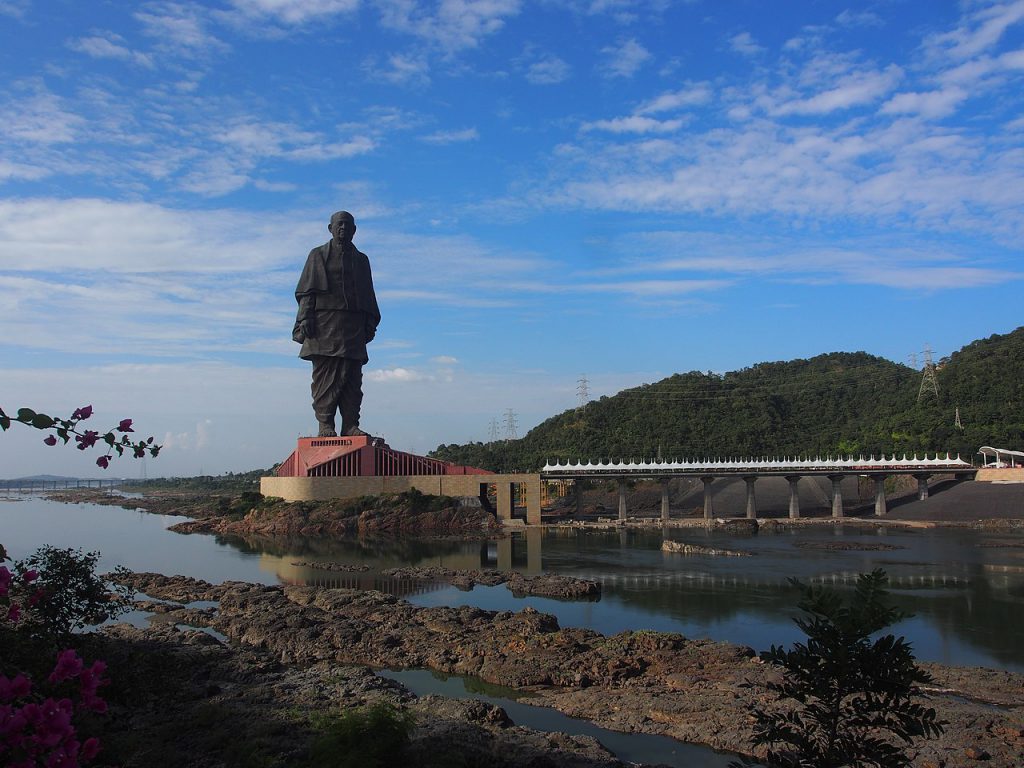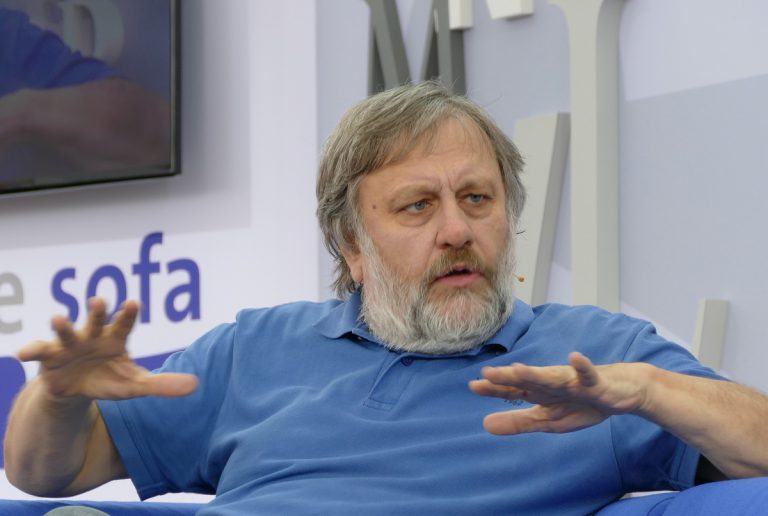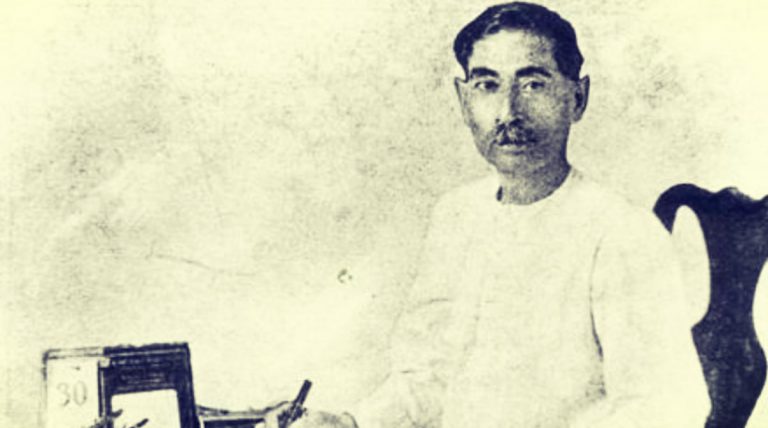The World’s Tallest Statue- It’s Patel’s but Gandhi also deserved one!
Dr. Jayan Philip is a Contributing Writer at The ArmChair Journal. His career as an educator spans over three decades, encompassing roles both in India and abroad. His passion for knowledge dissemination extends beyond traditional teaching to include extensive experience as a quiz master. His two forthcoming books are The Indomitable Gandhi, The Indefatigable Gandhi and Quintessentially Quizzical. He believes that through an understanding of history, individuals can gain valuable insights into both the triumphs and tribulations of the past, thereby enhancing their ability to make informed decisions and cultivate critical thinking skills in the present day.

———-
The World’s Tallest Statue is in India, a new record for India and our pride. Patel stands tall in the minds and hearts of Indians remembered for his grit and passion which he displayed in uniting the princely states. The Gandhi who walked the talk and shepherded his flock righteously following his core beliefs and values of humanism and Ahimsa did lead by example and stood for unity, harmony, and transparency. Many years down the lane his name is not forgotten and cannot be, as his legacy and life were intertwined. The boy who refused to change the misspelled word ‘Kettle’ as ketle to kettle even after the teacher’s nudge during the school’s inspection in Rajkot is a world-renowned figure and his name has gone down as one of the greatest minds which shaped the destiny of India- freed from the shackles of the British Empire built on loot and by ruthlessness, domination and racial discrimination. The United Nations celebrates his birthday as the International Day of Non-violence.
The Gandhian era was a witness to many world events which had jolted mankind with shocks of economic stagnation and social chaos like the Great Depression of 1929; the rise of dictatorships in Italy, Spain, and Germany which were authoritarian governments completely oblivious to the common man’s needs nor his well being; the Spanish Flu; and the Russian Revolution of 1917 which saw the withdrawal of Russia from the First World War reinforcing Germany’s superpower status. This is apart from the two World Wars, the second being more challenging for Gandhi as he had to navigate with utmost caution as the Japanese had slowly begun to knock at the shores of India but he steadily had the resolve to side with the British in the hope that the end of the war would make India an independent nation. Patel was his obedient disciple but did differ with him on many occasions and what needs a closer analytical look is the camaraderie which existed between him and Gandhi. It was a symbiotic relation, persistent in a relationship, positive in thought and nationalistic in nature and intent, and above all everything for and nothing beyond India.
It was Gandhi who nurtured, influenced, transformed, and impacted the Sardar. The First World War had brought the textile industry back in business primarily due to an increase in demand and rising population a few years later. Ahmedabad was a thriving center of textile production and the increasing number of successful millowners was finding business very rewarding. Industrialists became fond of Ahmedabad as it turned out to provide a good eco-system for textile businesses. It was the conflict between the mill owners and workers which brought Gandhi into the picture. The fast which he had undertaken in support of the mill workers cemented his position as a rising leader and emancipator. A compromise formula was worked out with the arbitrator and the workers agreeing to an increase of 27.5 percent in wages. If the success of the Ahmedabad mill owners strikes brought Gandhi into the limelight, many more epic Gandhi led resistances were coming in which altered the nature and texture of our freedom struggle carried on for decades on the principle of Non-violence.
Gandhi had preferred Nehru over Patel in 1929, 1936, and 1946 Congress sessions. The rationale behind this was perhaps only known to Gandhi at that time but one of the probable reasons in 1946 was that Gandhi expected some of the Muslims to come back to the Congress fold which didn’t happen as Pakistan was very much in Jinnah’s mind and he was moving steadily towards it with confidence and poise. Moreover, Maulana Abdul Kalam Azad was the president of the Congress sessions continuously for 6 sessions. C.Rajagopalachari in 1936 was expected to take over the presidency of the INC but decided not to throw his hat in the ring and the mantle fell on Nehru again. 1929 was a tumultuous year in world politics as the Great Depression led to the virtual disintegration of the World economy, it was a memorable year for India as the Purna Swaraj resolution was passed in Lahore and the tricolor was raised on the banks of Ravi by Pandit Nehru. Despite Gandhi’s preferential choice of Nehru over Patel, he remained a Gandhi loyalist till his last breath. Many question Gandhi’’s decision and believe that the only reconciliation or tribute to be paid to the Sardar is in the form of this colossal edifice in bronze – the Statue of Unity which is the world’s tallest.
Patel’s strong convictions based on nationalistic ideals cannot be questioned as he single-handedly orchestrated and managed the then-controversial Junagadh, Hyderabad accessions to the Indian union which was an astute decision with deeper political repercussions regionally and nationally. The Princely states constituted 28% of our population and 48% of the land area of pre-independence India. These could have become independent countries considering the ethnic. linguistic differences and posed an existential threat to our republic. One of the biggest achievements of the Indian Union which has gone unnoticed or fortunately not debated on television screens today is that we haven’t disintegrated into independent nation-states but have had only one flag and national anthem which introduce, inspire, integrate and impact us. The foundations of this and the conceptualized idea of a unified India with linguistic, religious, cultural, and ethnic plurality as a single homogeneous unit build on the bricks and mortar of democratic secular credentials on the constitutional provisions of freedom of thought, belief, faith, and worship is a tribute to each of our fallen heroes of the past and the present and the main architects of our freedom struggle – Maulana Azad, Patel, Nehru who were mentored and transformed and impacted by Gandhi.
Sardar Patel’s success in the Kheda and Bardoli satyagrahas brought him closer to Gandhi which in due course of time changed the nature of our freedom struggle. Patel’s skill and acumen in diplomatically and militarily making sure that the 552 princely states remained within the territorial and constitutional framework of a united India was futuristic in reality and historical for time immemorial. The process of accession to the Indian Union was perceived and integrated as a long term vision with diplomacy, tact, and force when and where required.
The Indian Independence Movement in the initial years of the 19th century was influenced by Early Nationalists and Extreme Nationalists (Moderates and Extremists) but it was the Gandhian era that crystallized the main doctrine of non-violence as the weapon to fight racial discrimination and the British presence. The Mahatma’s approach and impactful presence wherever he walked by or set foot had immense mass following and support which began to dislodge the British as the legislative and executive institutions of the ruthless, tyrannical British Raj could not handle the immense unprecedented support and respect which Gandhi commanded. The three revolutionary movements spanning over three decades from the Non-Cooperation Movement of the 1920s to the Civil Disobedience Movement of the 1930s characterized by the Dandi March which hit the headlines internationally and to the Quit India Movement of the 1940s which was most impactful to India and detrimental to Britain had a distinct trajectory of growth and evolution represented by the Gandhian ethos, philosophy and thought process. This was a distinct characteristic of the freedom struggles which were born as a result of the European colonization in the Afro- Asian countries.
According to GD Birla, one of the top industrialists, “Sardar Patel was not a revolutionary. He was essentially a man of constructive ideas. Many a time, he utilized my help and money. I would get a telegram, sometimes just two words — “Come. Many immediately” — and when I arrived he would tell me what I had to do. Inevitably the question of collection [of money] would come up. Once I told Patel what Gandhi said to me, “I do not like the Sardar collecting money from businessmen.” His reply was characteristic: “This is not his concern. Gandhi is a Mahatma, I am not. I have to do the job.”
The Mahatma needs a statue as a reminder of the fortitude and commitment he displayed for an Independent prosperous India. Article 1 of the Indian Constitution says ‘India that is Bharat shall be a Union of States” Today we crisscross the length and breadth of our motherland enjoying the freshness of Indianness without any fearlessness which prevailed during the British Raj as the Union Jack flew past. But the Indian tricolor epitomizes the strength and valor of our nation which unites us irrespective of our religious cultural, linguistic differences. That’s why India is an ethnological museum in reality for those who have seen and fiction for those who haven’t seen or set foot on. The Statue of Unity is also about the fortitude of the Sardar who believed in and represented the diversity of India. The integration of the 562 princely states was a remarkable achievement which perhaps was not recognized during Patel’s time but it was Gandhi’s dream which was realized unfortunately after he was gone. Patel’s legacy is akin to Otto Von Bismark who united 39 states of the Prussian Federation and laid the foundations of a stronger Germany.
I do not intend to argue that Patel’s statue shouldn’t have been the tallest but one of Gandhi should have been there besides to visually remind the world of our Mahatma and that a united India of all religions and castes is what even he envisaged, dreamt and died for. 70 countries have statues of Gandhi which shows the significance of his lasting legacy and exemplary life, a classic example of servant leadership in word and action.
The Mahatma is an icon of humility, courage, determination, perseverance and above all an apostle of peace. Among the many who were able to impact and change the destiny of South Africa is Nelson Mandela who never gave in to the inhuman discriminatory policy of apartheid. Through his persistent efforts and refusal to become a victim of white supremacy, he became a beacon of hope to millions across the world. India does not have a Barack Obama nor did not have a Nelson Mandela or Martin Luther King but we had a Mahatma who impacted them.
Albert Einstein said this about Gandhi.
“Generations to come, it may well be will scarce believe that such a man as this one ever in flesh and blood walked upon this earth”
This man was our Mahatma and he deserves a statue as tall or even taller than Sardar Patel’s.
References
- https://www.gandhiheritageportal.org/
- https://theprint.in/pageturner/excerpt/gandhi-is-a-mahatma-i-am-not-said-sardar-patel/128272/
- http://gandhiworld.in/
Featured Image Credits: Wikimedia








